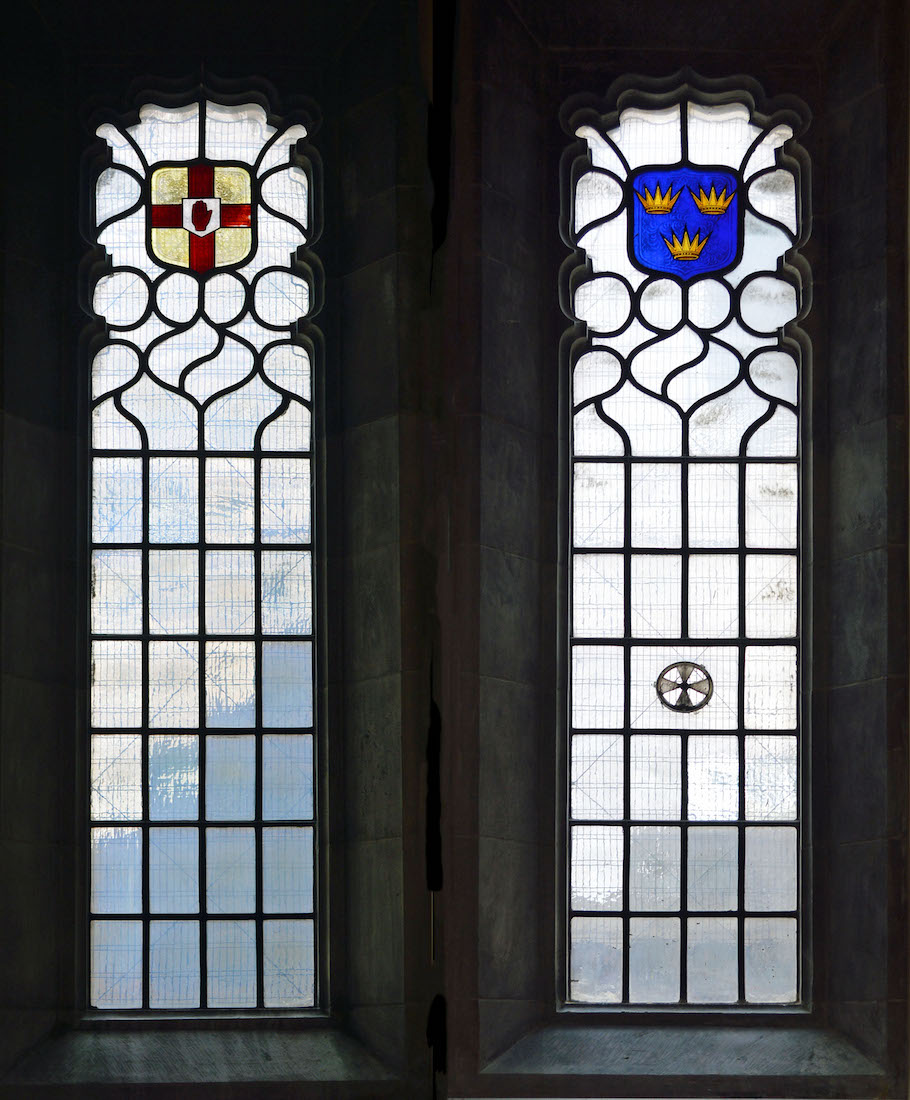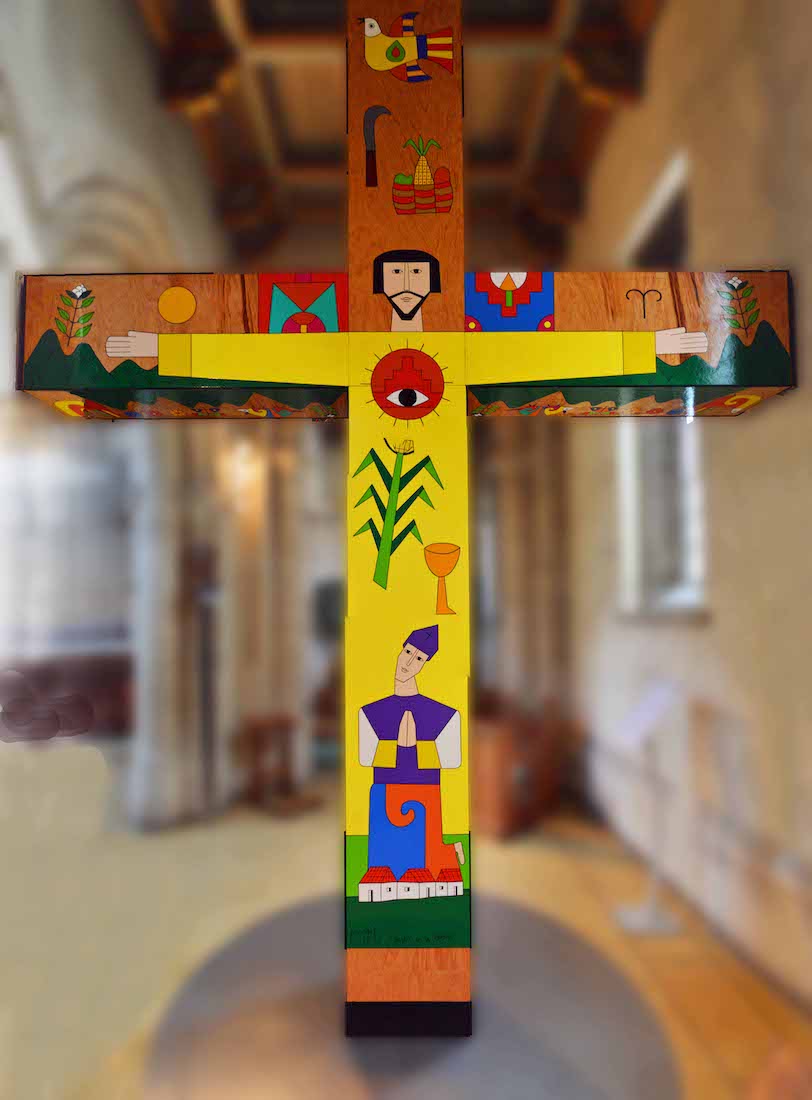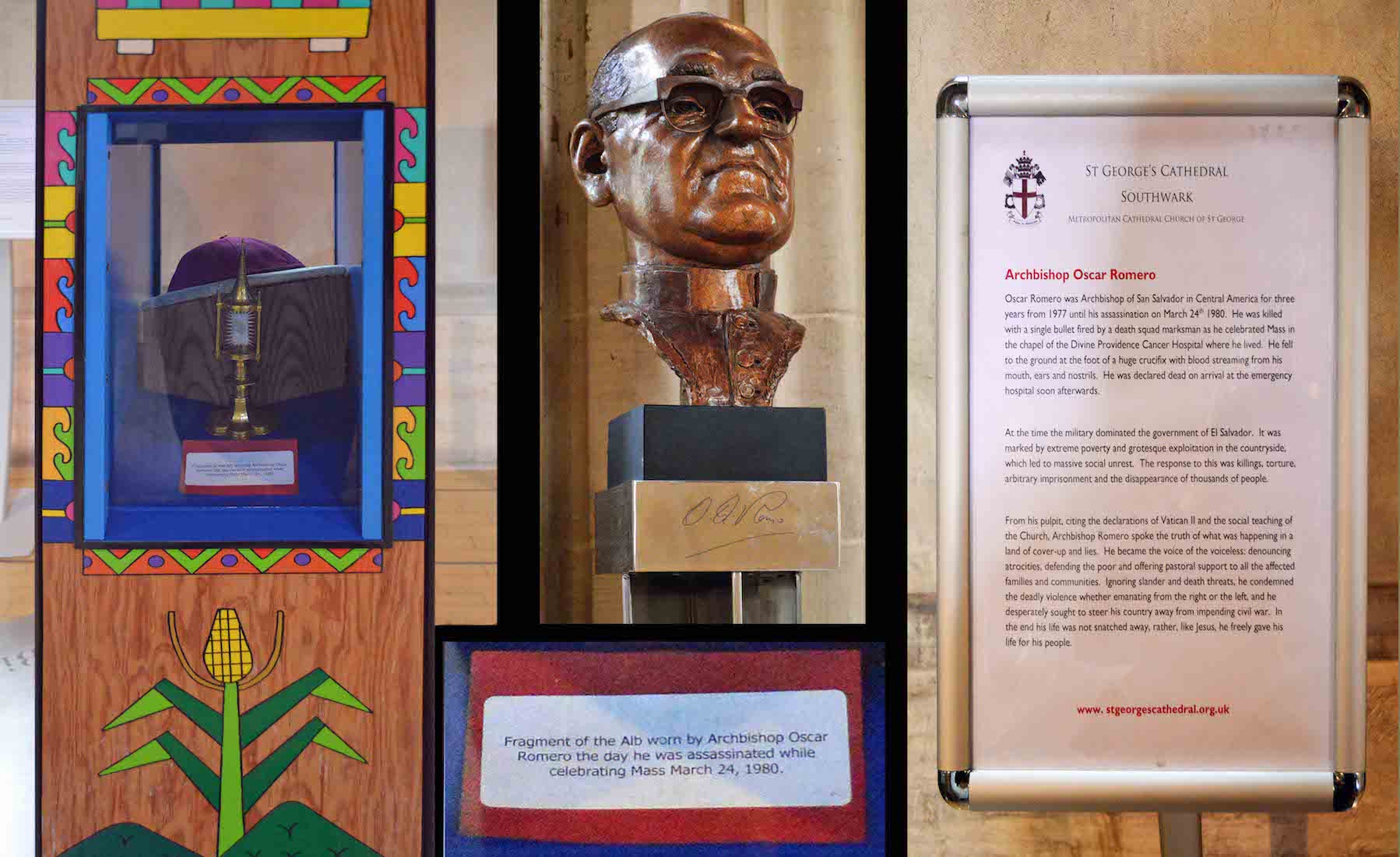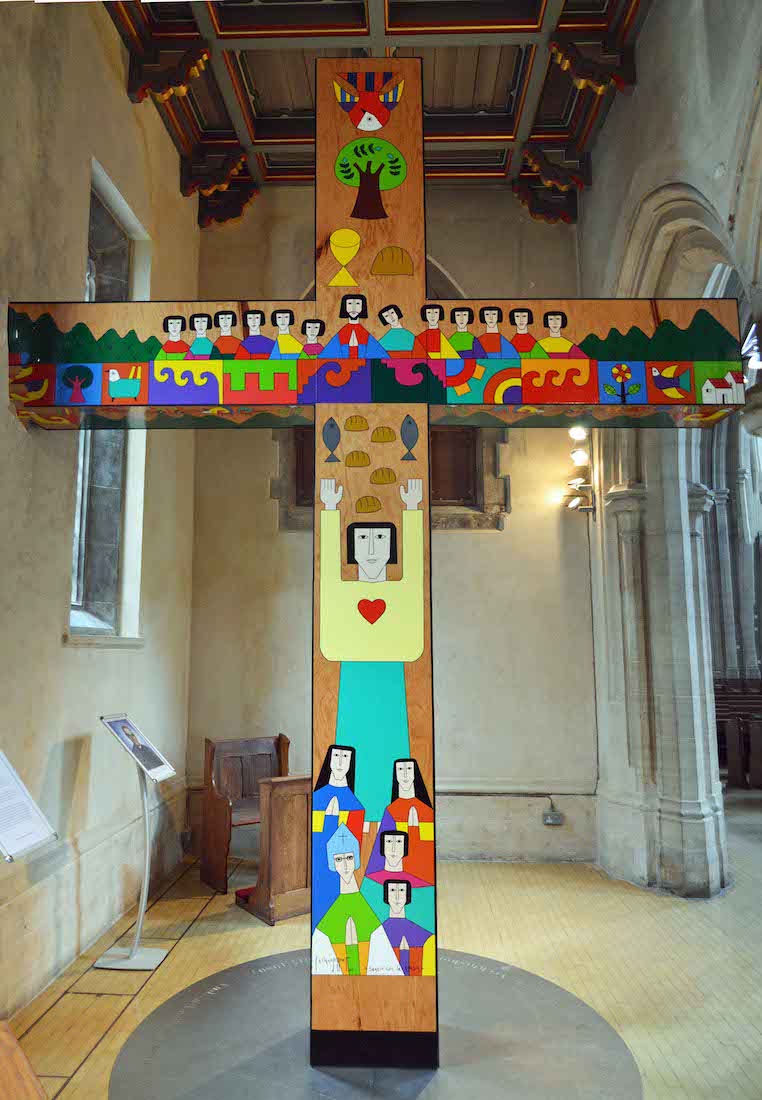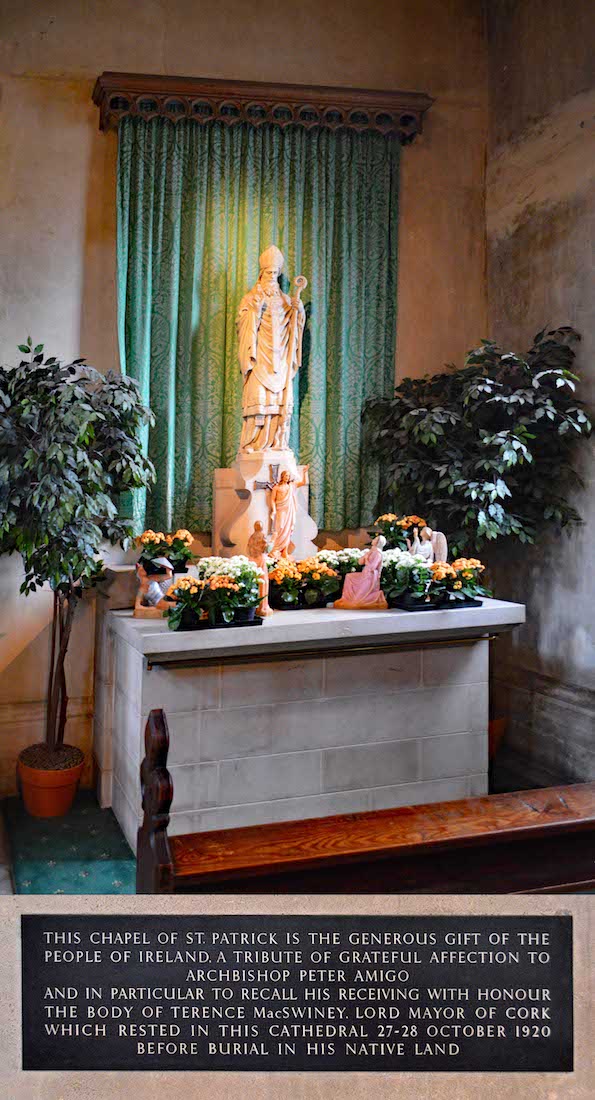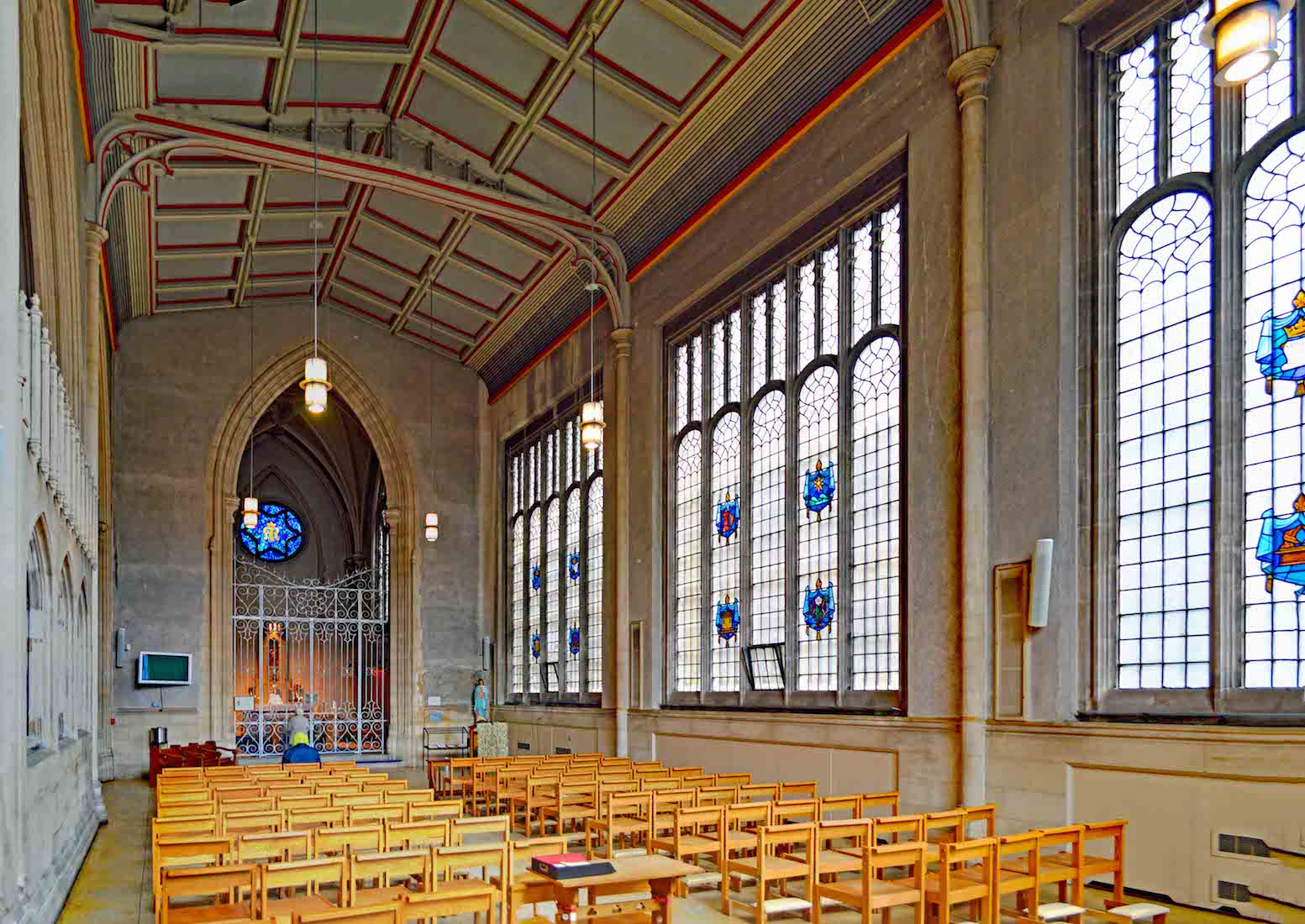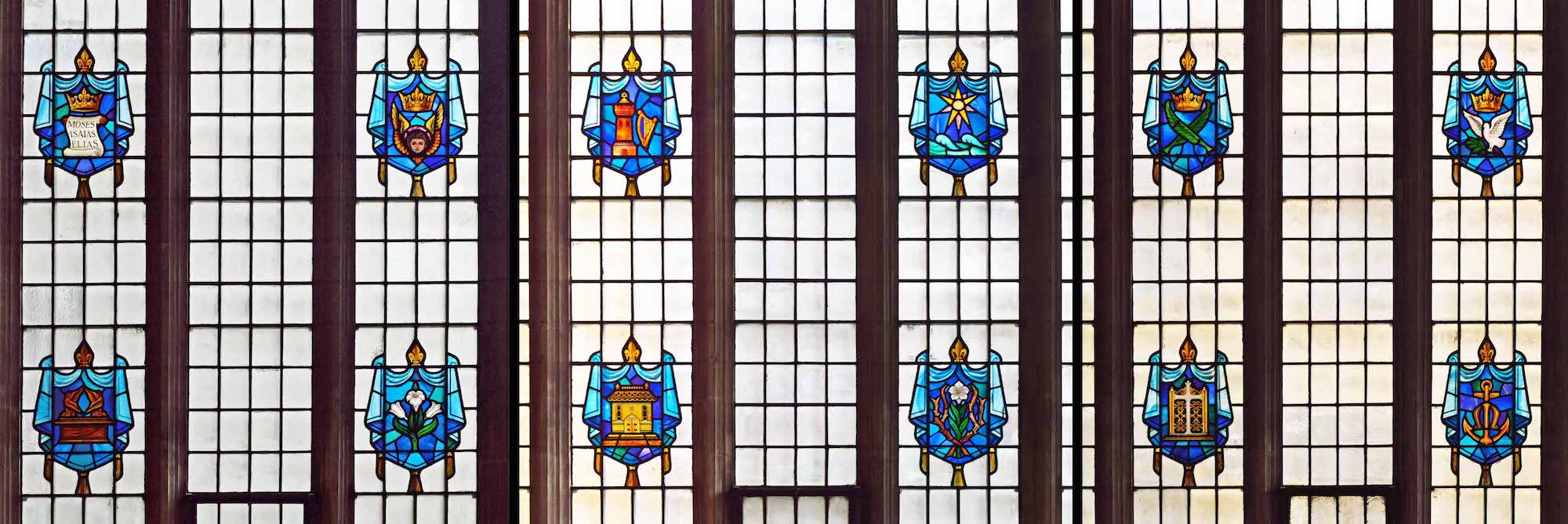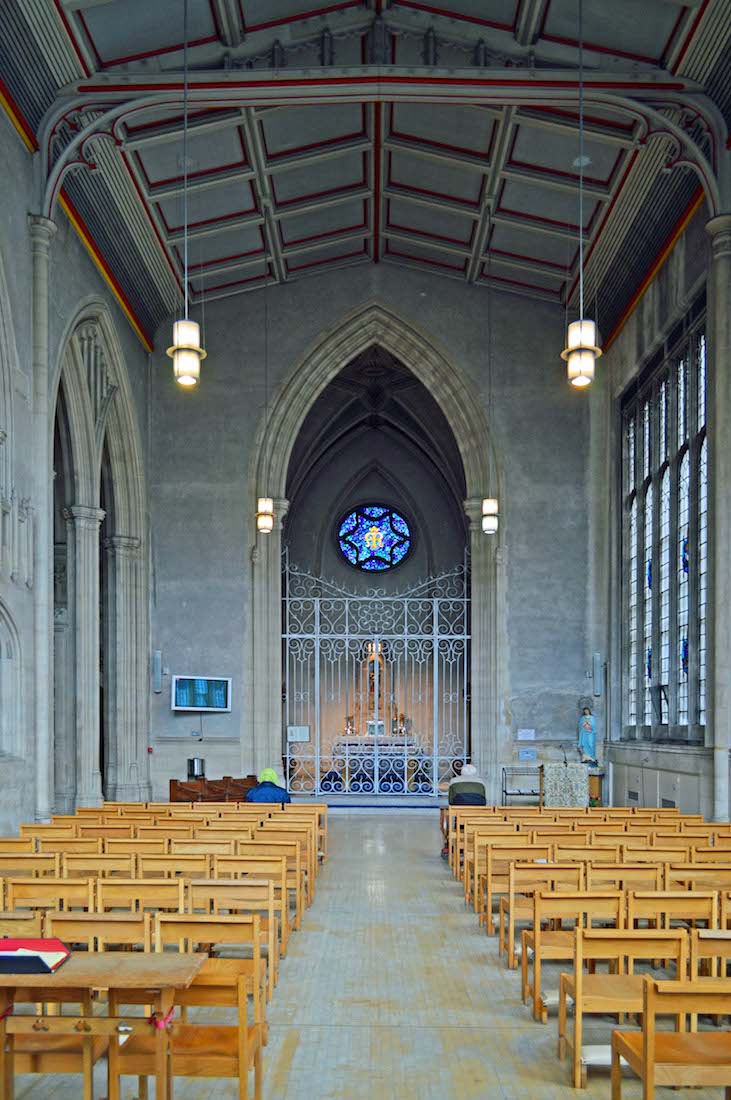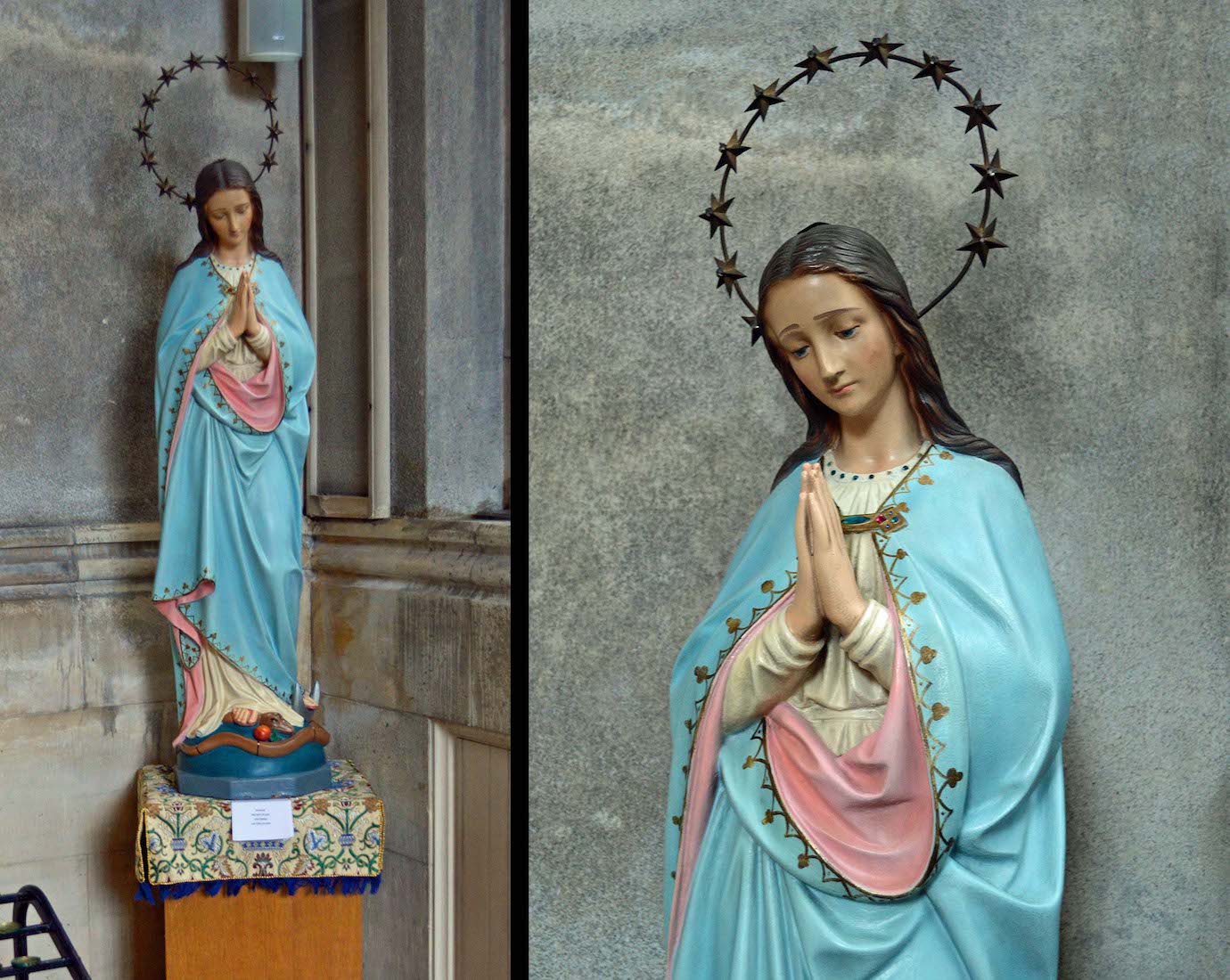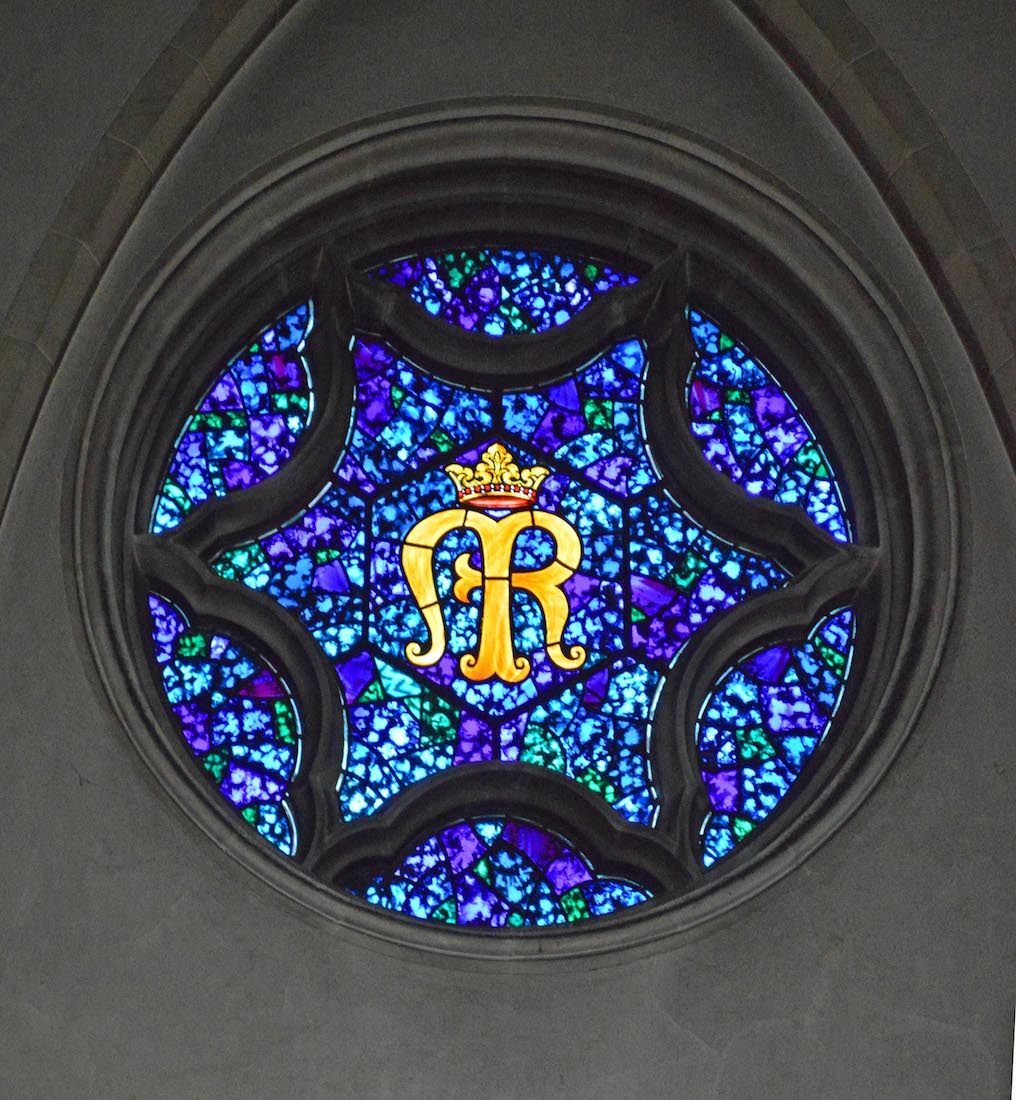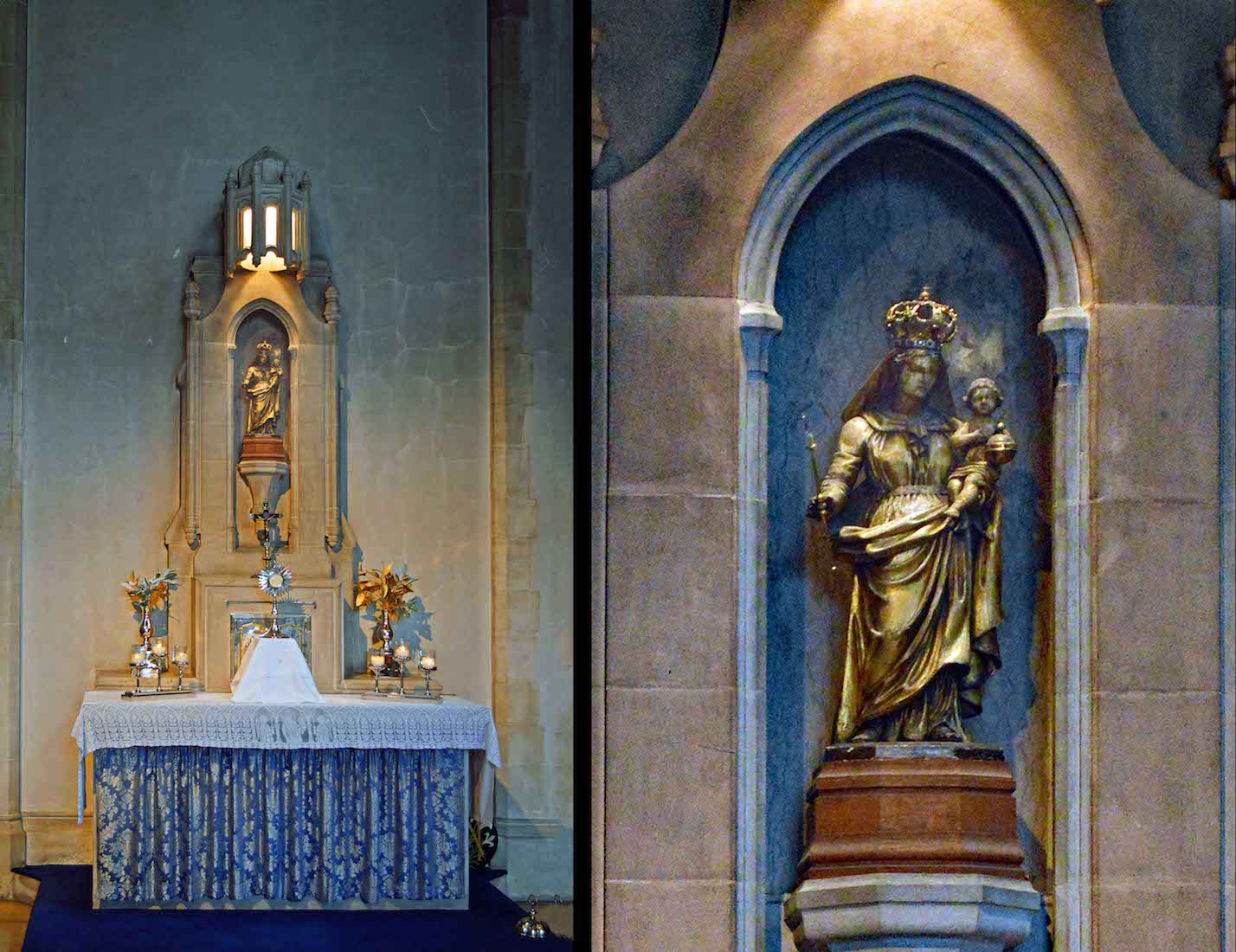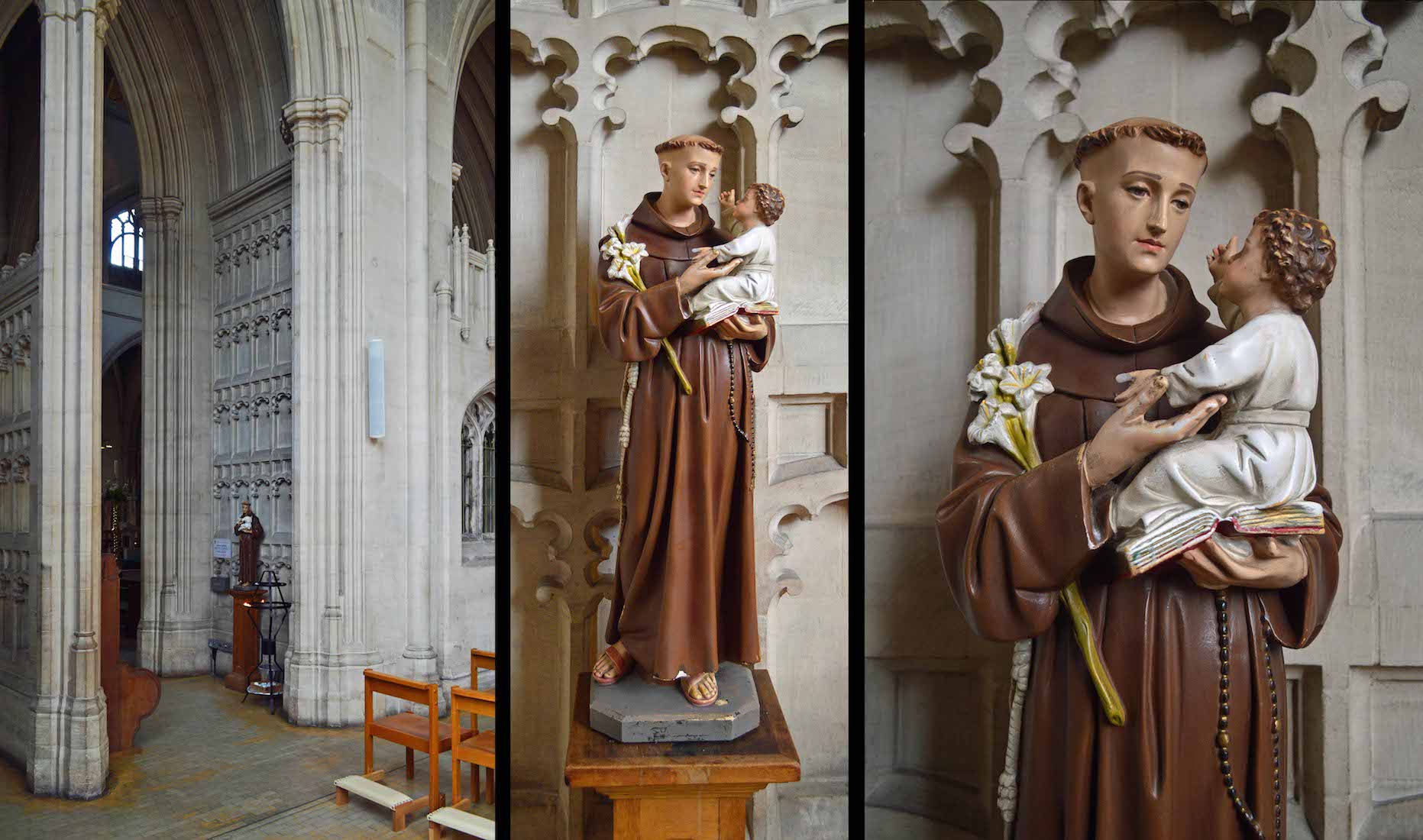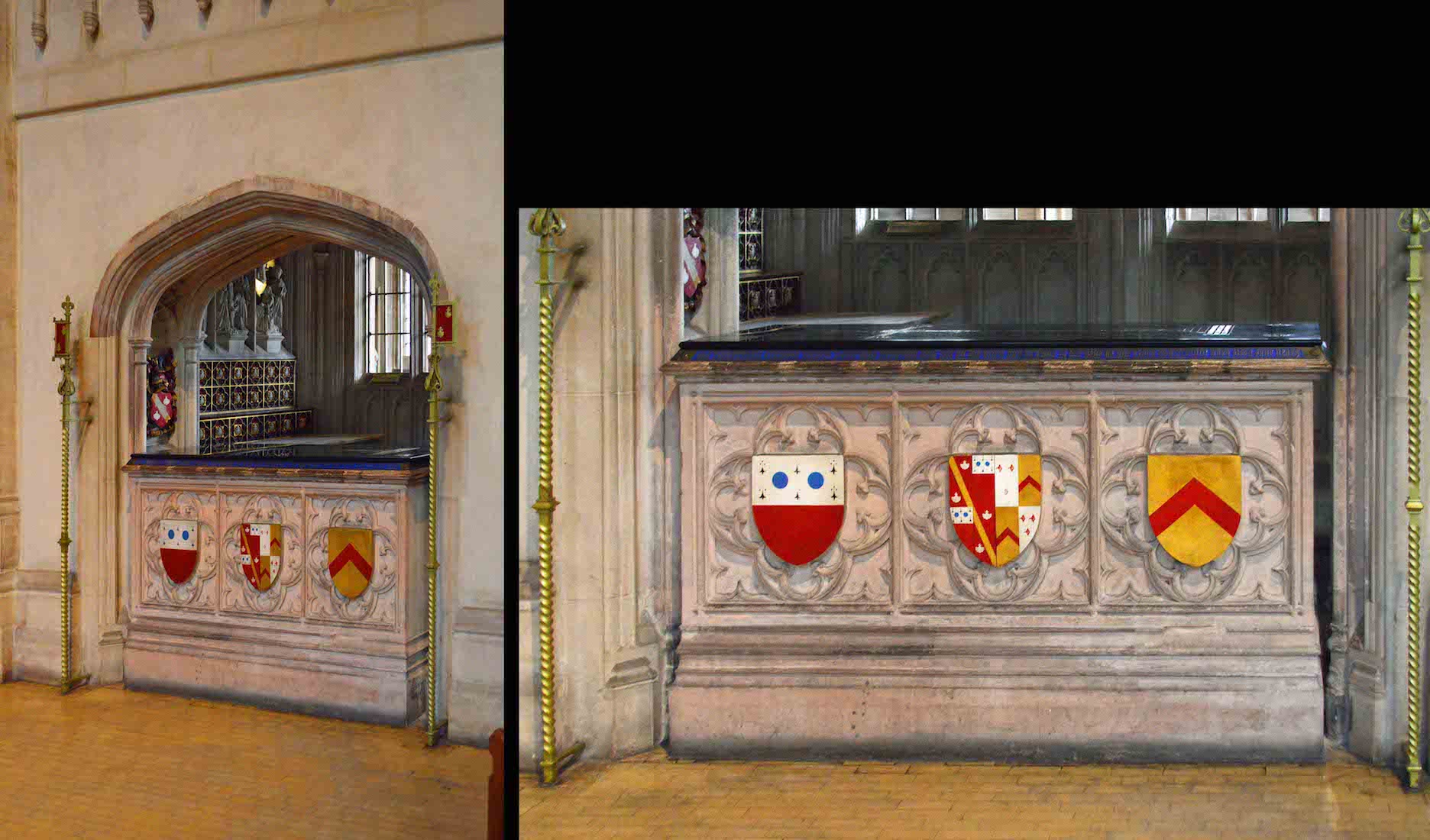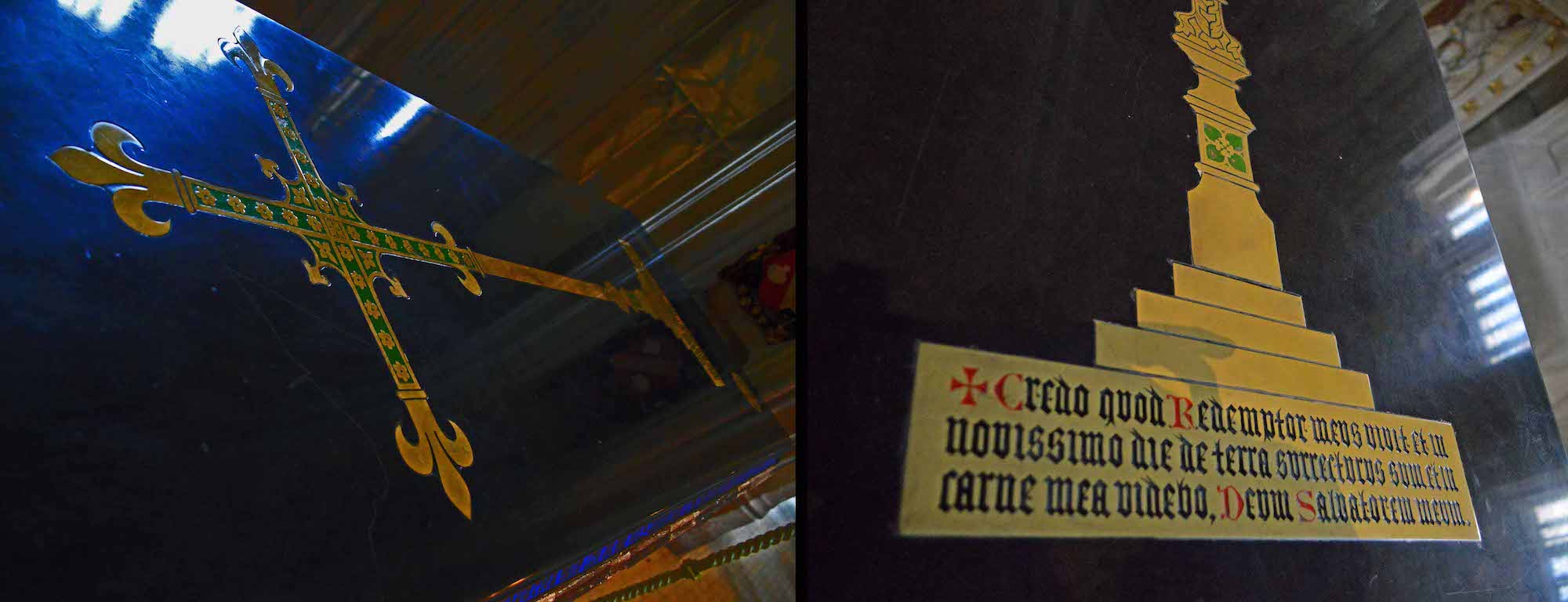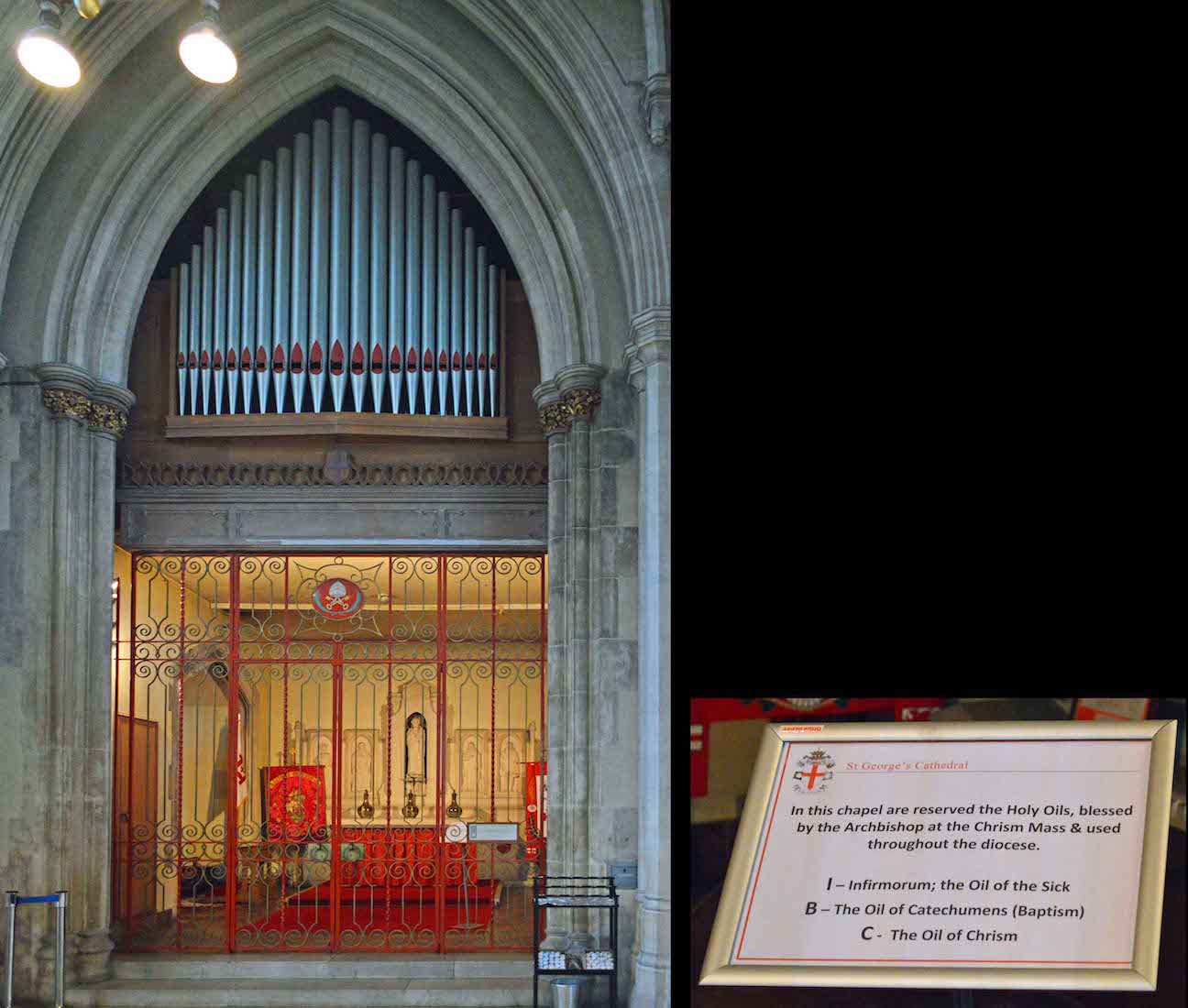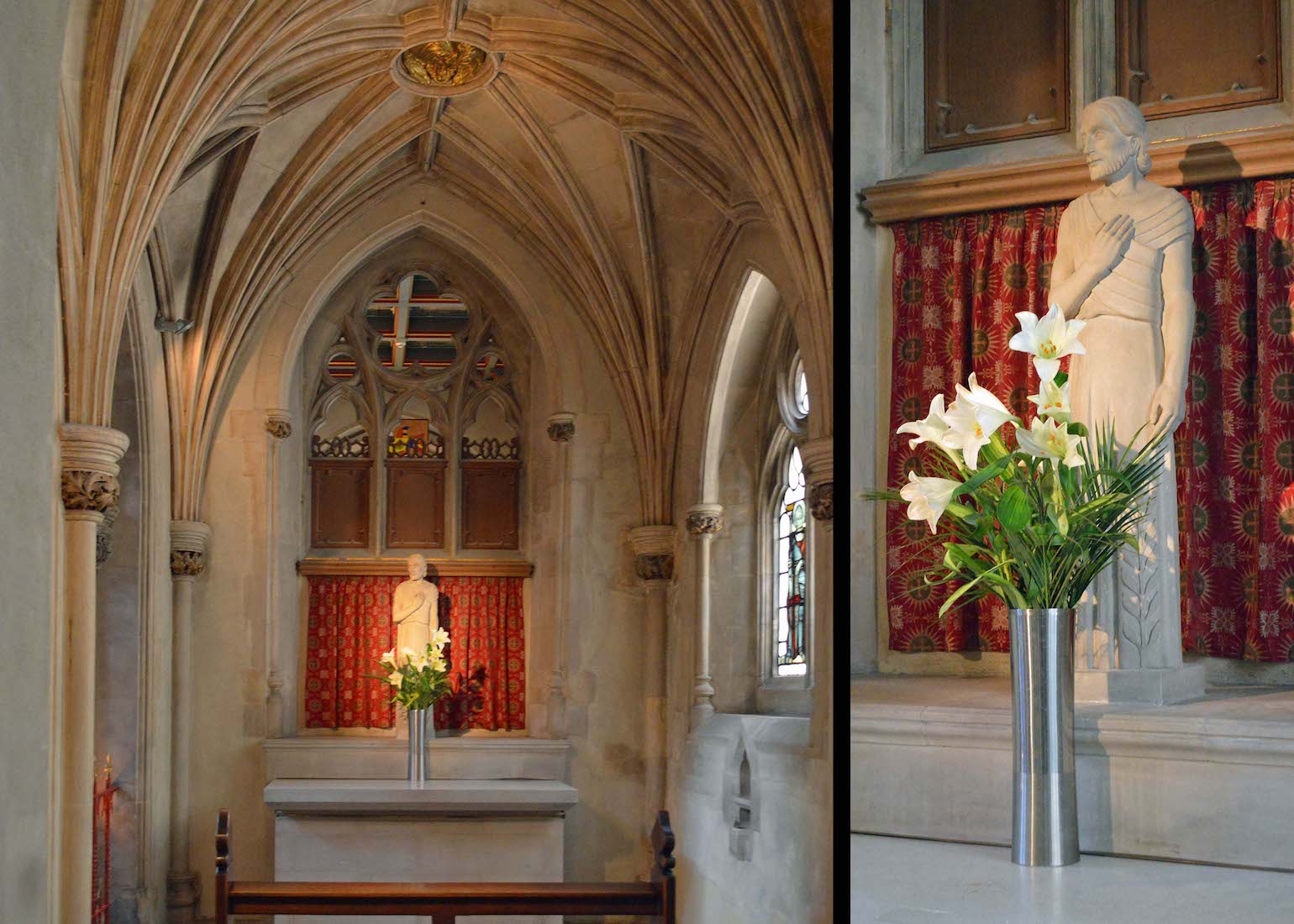
At the East end is a simple altar with a lone standing figure. Can we assume this is St Joseph? Apart from the name of the Chapel, there are no clues. We leave the chapel and walk to … .. PLAN
42. THE ROMERO SHRINE

St Oscar Romero was Archbishop of San Salvadore. He was assassinated there in 1980 as he said mass. Next to St George’s is Romero House, headquarters of CAFOD, who do much work in Latin America. Many people from Latin America attend St George’s.
43. ROMERO WINDOWS
Each of the two windows here is of clear lattice glass with a shield at the top. The shield at the top of the left hand is known as ‘The Red Hand of Ulster’. The shield at the top of the right window appears to represent Sweden, although this seems unlikely.
44. ROMERO CROSS
The Romero Cross is by Fernando Llort and contains relics of St Oscar. It was installed in 2013. It stands very large and is covered with a number of simple, brightly coloured images.
45. ROMERO EXHIBITS
At left is a detailed view of the reliquary set into the back of the cross. There is also a bust of Romero, and some details of his life and work.
46. REAR OF CROSS
When we view the cross from the back, we are faced with many new colourful images.
47. ST PATRICK CHAPEL
The next chapel is St Patrick’s Chapel dating from the 1950s. A plaque commemorates Terence MacSwiney, Lord Mayer of Cork and an Irish Republican. He died in Brixton Prison in 1920 after a hunger strike. Against the Government’s wishes, he was given a Requiem Mass in St George’s.
48. CHAPEL ALTAR
St Patrick stands behind the altar with a vanquished snake at his feet. Two ladies and an angel worship Patrick? or the smaller figure of Christ.
49. DAY CHAPEL
Beyond St Patrick’s Chapel we come to the large Day Chapel. The Day Chapel dates from 1963, and was originally part of the Lady Chapel. The chapel has large clear windows along one side, and faces on to the screened Lady Chapel. Another statue of the Virgin Mary stands at the front of the Day Chapel.
50. CHAPEL WINDOWS
The badges in the Chapel windows represent the titles of Our Lady.
51. DAY CHAPEL EAST
The Day Chapel opens directly on to the Lady Chapel – or it would if there were no screen doors. This may be a security issue, but I would find such a screen a detraction to worship. There is an information sheet on the left of the screen, and as we have seen, a statue of the Virgin Mary at right.
52. OUR LADY OF ST GEORGE INFORMATION
‘Our Lady of St George’ is a small statue locked in the Lady Chapel of the Cathedral. Its source is unknown but experts believe it to be of Flemish origin, and dating from about 1725. Tradition has it that it was procured by Father Doyle shortly after 1829 when he became Head Chaplain at the old St George’s Chapel in London Road.
53. OUR LADY STATUE
The statue of the Virgin Mary at the chapel shows Mary in reflective mood. She is dressed in traditional blue, and a halo of stars surrounds her head, symbolizing the suffering she will endure with her Son.
55. CHAPEL ALTAR
The small altar is draped with blue and white cloths. It bears several small candles, a monstrance, and the statue of the Virgin and Child. The statue was solemnly crowned by the Bishop in 1954, and is known as ‘Our Lady of St George’s’. Leaving the Lady Chapel, we now walk back through to the back of the Day Chapel.
56. ST ANTHONY
Through here a triple arch was erected in the 1950s. After the War, extra land behind the Petre Chantry became available. The Chantry had originally been built outwards from what was then the main wall of the Church, so it was dark and almost hidden. Architect Romilly Craze’s inspired solution provided a transition to the new area, whilst releasing the Chantry to become virtually free-standing. Saint Anthony of Padua (1195 – 1231), also known as Saint Anthony of Lisbon, was a Portuguese Catholic priest and friar of the Franciscan Order. He was born and raised by a wealthy family in Lisbon, and died in Padua, Italy. Noted by his contemporaries for his powerful preaching, expert knowledge of scripture, and undying love and devotion to the poor and the sick, he was one of the most quickly canonized saints in church history.
57. PETRE CHANTRY
This chantry of Edward Petre was created by A.W.N. Pugin in 1849 – part of the original Cathedral. It is a perfect Gothic gem in Perpendicular style. Edward and his wife Laura were friends and supporters of Fr Thomas Doyle, and generous donors..
58. CHANTRY ALTAR
On the reredos, Edward kneels besides St Edward, and Laura beside St Lawrence. It was feared at the time that the bas-relief of Our Lady on the altar frontal might attract anti-Catholic vandalism. Edward’s widow joined the Sisters of Notre Dame of Namur.
59. TOMB COVER
The chantry was endowed for the saying of Masses for the soul of Hon Edward Petre who is buried here.
60. CHAPEL OF ST PETER AND MARTYRS
Just past the chantry is this chapel of St Peter and the English Martyrs dates from the 1950s. The Information Board outside the chapel describes the three Holy oils which stand on the altar. These are: Infirmorum – the Oil of the Sick; Baptism – the Oil of Catechumens; Chrism – the Oil of Chrism (used for anointing, for example in the Ordination of a Bishop).
Above the Chapel is a set of organ pipes. The Cathedral organ is cleverly hidden! The organ was built by John Compton Organ Company Ltd and was completed in 1958. The organ follows the so-called ‘extension principle’, in which a rank of pipes was borrowed for various stops and functions, enabling space to be saved within an organ chamber, also saving money after the costly rebuilding of the cathedral following the damage in the Second World War. It contains only nineteen ranks of pipes, but these ranks inventively furnish a three-manual organ of 69 sounding stops, broadly in the English Romantic tradition. The organ is installed in two enclosed chambers located East of the South transept above the Martyr’s Chapel. Some remedial work was begun in 2000 by Whitwell Green, Organbuilders, to get various parts of the instrument working again; some electronic components were replaced in 2009; more restoration was completed in 2019.


